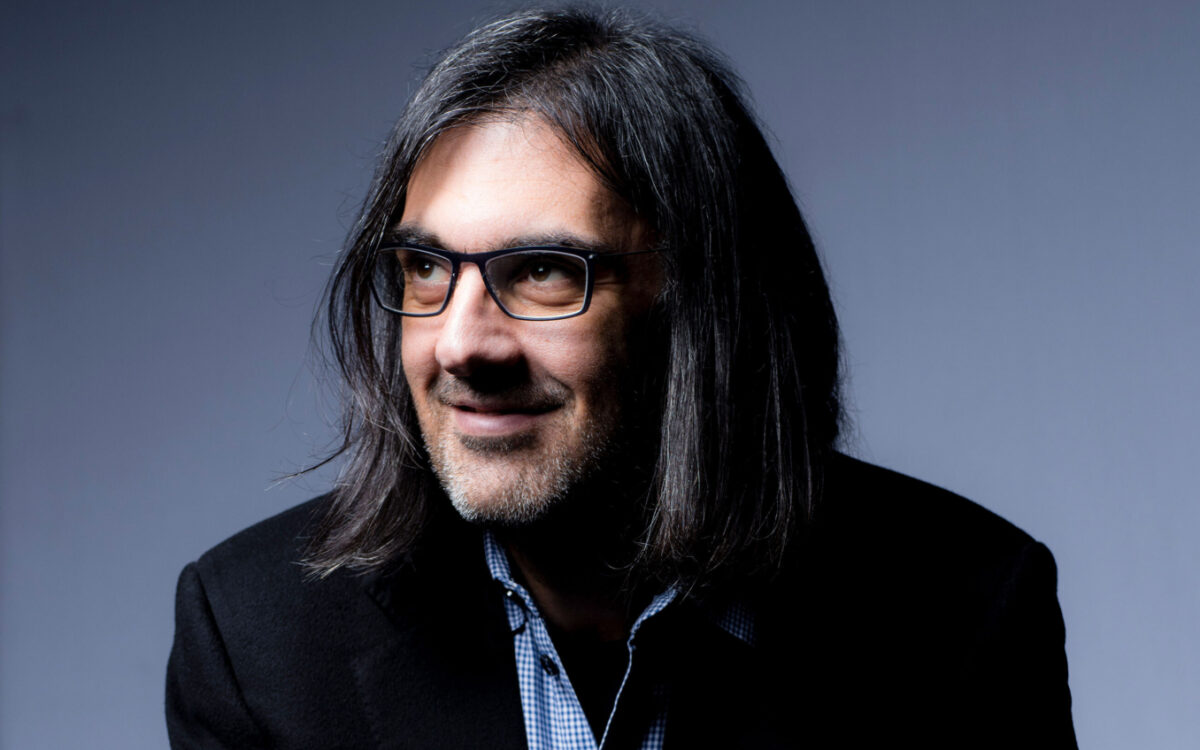Violin Concerto in D
Pyotr Ilyich Tchaikovsky was born at Votkinsk, Vyatka Province, on May 7, 1840, and died in St. Petersburg on November 6, 1893. He began work on the Violin Concerto at Clarens, Switzerland, in March 1878, completing it on April 11; but on the advice of his brother Modest and his student Yosif Kotek, he then took a few more days to replace the original Andante with the present Canzonetta. (The Andante survives as the “Meditation” that opens the set of pieces for violin and piano called Souvenir d’un lieu cher, Opus 42.) Leopold Auer, to whom the concerto was first dedicated, pronounced it impossible to play; the first performance was given by Adolf Brodsky at a Vienna Philharmonic concert conducted by Hans Richter on December 4, 1881.
In addition to the solo violin, the score of the concerto calls for 2 each of flutes, oboes, clarinets, and bassoons, 4 horns, 2 trumpets, timpani, and strings (first and second violins, violas, cellos, and double basses).
In his rich four-volume biography of Tchaikovsky, David Brown devotes the entire second volume—“The Crisis Years, 1874-1878”—to a narrow, four-year span in the composer’s life. The crisis was real and had complicated elements, both professional and personal. Its centerpiece was the composer’s catastrophic marriage, a step taken in the hope of stopping supposition about his homosexuality. He and his bride had scarcely started off on their honeymoon before the composer recognized his folly; in torment, he ran away to Switzerland to try to forget. It was there that he composed the Violin Concerto.
The marriage was by no means Tchaikovsky’s only crisis during those years. At the beginning of that period he had composed a piano concerto for his close friend Nikolai Rubinstein, only to have the pianist declare the work worthless and unplayable. Utterly dismayed, Tchaikovsky finally managed to arrange a performance in far-away Boston; if it flopped, he would not be there to hear it himself. Ironically the piece quickly became one of the most popular of all piano concertos. Soon after, he composed the ballet Swan Lake, which was a failure in its first production. The composer went to his grave without ever knowing that the world would come to regard Swan Lake as a masterpiece.
There were some assorted triumphs, though. The Fourth Symphony—deeply etched with the composer’s Slavic fatalism—was not only a success, but marked one of the first major works he composed with the extraordinary patronage of Nadezhda von Meck, who sent him a regular stipend for a dozen years on the strict understanding that they were never to meet. The grateful composer declared that in the future his every note would be composed with an implicit dedication to her.
But in the aftermath of his marriage there was only flight, and frantic determination to get away. His wife Antonina was staying with his sister and her husband. Letters passed back and forth between all the members of the family, with Antonina sometimes making wild charges (e.g., that Tchaikovsky’s valet had bewitched him into hating her), sometimes expressing hope for a reconciliation, despite Tchaikovsky’s repeated insistence that such a thing could never be. He spent some months in Italy, where several of his brothers joined him, and he gradually grew calmer in the contemplation of Italian art and the Italian countryside. But financial necessity forced him to find a cheaper place to stay, and on March 9, 1878, he arrived in Clarens, Switzerland. He quickly telegraphed his student, friend, and possible lover, the violinist Yosif Kotek, who was then in Berlin, to inform him of the change of address. On the 13th he began a piano sonata, his first act of composition since the wedding. The next day Kotek arrived in Clarens. Within a few days, Tchaikovsky abandoned the piano sonata, which was not going well. Within a day or two, he and Kotek played through Lalo’s Symphonie espagnole, which, despite its title, is a violin concerto. His interest in this piece (he noted that it had “a lot of freshness, lightness, of piquant rhythms, of beautiful and excellently harmonized melodies”) may well have turned his own mind in the direction of a violin concerto. He liked the way that Lalo does not strive after profundity, but carefully avoids routine, seeks out new forms, and thinks more about musical beauty than about observing established traditions, as do the Germans.
Perhaps it was this that persuaded him to give up the sonata entirely and turn to a concerto, particularly since he had a violinist at hand to give him technical advice about the solo part. On March 17 he began the new piece and discovered to his delight that, unlike the piano sonata, it went easily. In just eleven days he sketched the entire concerto. The composer’s brother Modest and Kotek expressed reservations about the slow movement, though they were enthusiastic about the two outer movements. Upon consideration, Tchaikovsky agreed with them and on April 5 replaced the original slow movement with a new piece. The enthusiasm of all three men was so great that Tchaikovsky finished the orchestration, too, in short order. By April 11 the concerto was complete.
Now, however, he was in for another professional crisis—a repetition of his experience with the First Piano Concerto. He dedicated the new work to Leopold Auer, hoping that Auer would play the first performance, which was advertised for March 22, 1879. The work had already been published, and Auer regretted (as he wrote thirty years later) that he had not been consulted before the work had been fixed in print. Auer is supposed to have declared the work “unplayable,” though he later defended himself by explaining that he meant only that, as written, some of the virtuoso passages would not sound as they should. In any case, Tchaikovsky was deeply wounded. Kotek himself declined to play the work in Russia. Two years later Tchaikovsky learned from his publisher that Adolf Brodsky had learned the piece and was planning to play it in Vienna. That performance, which took place at the end of 1881, elicited one of the most notorious reviews by Vienna’s conservative music critic Eduard Hanslick. Tchaikovsky never got over it; to the end of his life he could quote it by heart.
The Russian composer Tchaikovsky is surely no ordinary talent, but rather, an inflated one, obsessed with posturing as a genius, lacking discrimination and taste. The same can be said for his new, long, and ambitious Violin Concerto. For a while it proceeds soberly, musically, and not mindlessly, but soon vulgarity gains the upper hand and dominates until the end of the first movement. The violin is no longer played; it is tugged about, torn, beaten black and blue. The Adagio is well on the way to reconciling us and winning us over, but it soon breaks off to make way for a finale that transports us to the brutal and wretched jollity of a Russian church festival. We see a host of savage, vulgar faces, we hear crude curses, and smell the booze. In the course of a discussion of obscene illustrations, Friedrich Vischer once maintained that there were pictures one could see stink. Tchaikovsky’s Violin Concerto for the first time confronts us with the hideous idea that there may be compositions whose stink one can hear.
Hanslick, sitting in Vienna, found Russia, and everything Russian, as represented in Tchaikovsky’s music, to be uncivilized. How ironic that, among his contemporaries, Tchaikovsky was regarded as the westernized Russian, the one who had spurned the truly nationalistic approach of “The Five.” In any case, we have trouble today locating the “stink” in this music. For nearly a century it has simply been one of the four or five most popular violin concertos in the literature, which is answer enough to Hanslick.
The first movement starts with a simple, graceful melody in the violins—a melody that will not return (a trick Tchaikovsky also famously employed in the First Piano Concerto). Here we might even anticipate a quasi-Classical piece like his Rococo Variations for cello and orchestra, but soon the orchestral part grows more portentous, preparing for the soloist’s entrance. The melodic flow of the exposition is a marvel of both sheer melodic invention and continuing development, as tiny figures from one melody crop up, subtly varied, in the next. The Andante is an extended song (its heading, “Canzonetta,” is significant). During the months away from Russia, Tchaikovsky had written endlessly in his letters of his nostalgia, of his longing to be home again; he poured all of the yearning into the melancholy of this ardent movement. The finale is vigorous, even pictorial, with hints of peasant bagpipes and dances, vivid in its color and rhythm. Even at its most virtuosic, the solo part is designed to color and highlight the melodic unfolding of the movement. Surely it is this openhearted singing quality that wins all hearts.
Steven Ledbetter
Steven Ledbetter, a freelance writer and lecturer on music, was program annotator of the Boston Symphony Orchestra from 1979 to 1998.
The first American performance of music from Tchaikovsky’s Violin Concerto took place on February 11, 1888, in Boston, when Bernhard Listemann played just the first movement with piano accompaniment. The first complete performance in the U.S. was on January 18, 1889, with Walter Damrosch conducting the New York Symphony Society and soloist Maud Powell. Powell had already played the first movement in New York the previous April with Anton Seidl conducting. Walter Damrosch and the New York Symphony gave the first complete Boston performance of the concerto, on January 13, 1891, with soloist Adolf Brodsky, who had given the world premiere in 1881.
The first Boston Symphony performances of music from Tchaikovsky’s Violin Concerto were of just the second and third movements, under Emil Paur in December 1893 in Boston with soloist Timothée Adamowski, and in December 1896 in Baltimore and New York with Carl Halir. The orchestra’s first complete performances were on January 26 and 27, 1900, with Alexandre Petschnikoff under Wilhelm Gericke. The concerto has been a constant of the BSO repertoire since then



